Table of Contents
- Understanding Separation Anxiety in Dogs
- Identifying Signs of Crate Whining in Dogs
- Causes of Separation Anxiety in Dogs
- Training Techniques to Reduce Crate Whining
- Positive Reinforcement for Coping with Separation Anxiety
- Providing Comfort to Your Dog During Separation
- Building a Safe and Secure Crate Environment
- Managing Separation Anxiety Through Exercise and Routine
- Seeking Professional Help for Severe Separation Anxiety
- Staying Patient and Consistent in Coping with Crate Whining
Understanding Separation Anxiety in Dogs
Separation anxiety is a common behavior issue in dogs that occurs when they are separated from their owners or left alone. It can lead to destructive behaviors like excessive barking, digging, and chewing on objects, and can also cause physical symptoms such as vomiting and diarrhea.
Symptoms of Separation Anxiety in Dogs
Dogs suffering from separation anxiety may display a range of symptoms that can include:
- Constantly following their owner around the house
- Barking or howling excessively when left alone
- Urinating or defecating in the house when left alone
- Chewing or digging at doors, windows, or furniture when left alone
- Drooling excessively when anticipating their owner’s departure
- Attempting to escape from the house or crate
Causes of Separation Anxiety in Dogs
- Lack of socialization during puppyhood
- A traumatic experience during a previous separation
- A sudden change in the owner’s schedule or routine
- Medical issues or chronic pain
- The loss of a family member or pet
The Importance of Early Detection
Early detection of separation anxiety in dogs is essential for successful treatment. If left untreated, the behavior can escalate and cause more severe physical and emotional problems for the dog. It’s important to recognize the symptoms and address the issue promptly to ensure the dog’s health and happiness.
In the next section, we’ll explore the signs of crate whining in dogs and how to identify them.
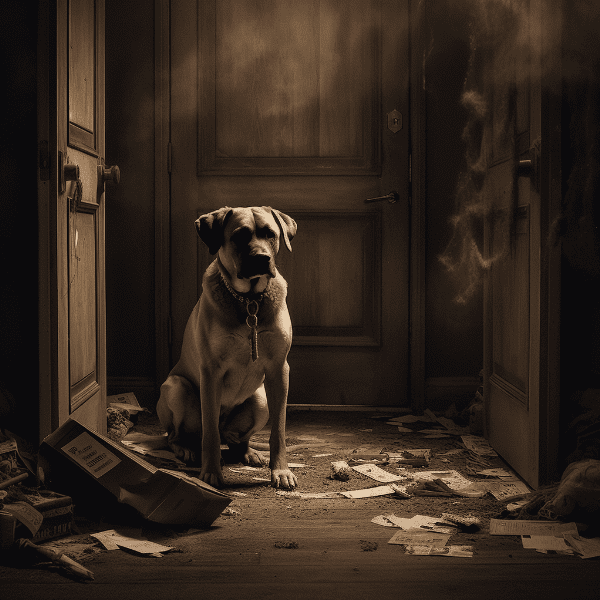
Identifying Signs of Crate Whining in Dogs
Crate whining is a common symptom of separation anxiety in dogs. It occurs when dogs are left alone in their crate or confined space, and they begin to whine, bark, or howl excessively. If your dog is experiencing crate whining, it’s important to identify the signs early on to prevent the behavior from escalating.
Behavioral Signs of Crate Whining
The behavioral signs of crate whining in dogs can vary from dog to dog. However, some common signs may include:
- Whining, barking, or howling excessively when left alone in the crate
- Attempting to escape from the crate or confined space
- Chewing or digging at the crate or surrounding area
- Panting or drooling excessively
- Displaying destructive behavior like tearing up bedding or toys
Physical Signs of Crate Whining
Crate whining can also cause physical symptoms in dogs. Some common physical signs may include:
- Loss of appetite or refusal to eat
- Vomiting or diarrhea
- Excessive shedding or grooming
- Injuries from attempting to escape the crate
Monitoring Your Dog’s Behavior
It’s important to monitor your dog’s behavior closely when they are left alone in their crate. Keeping a log of their behavior can help you identify patterns and determine if your dog is experiencing separation anxiety or other behavior issues.
In the next section, we’ll explore the causes of separation anxiety in dogs and how they can be addressed through training techniques.
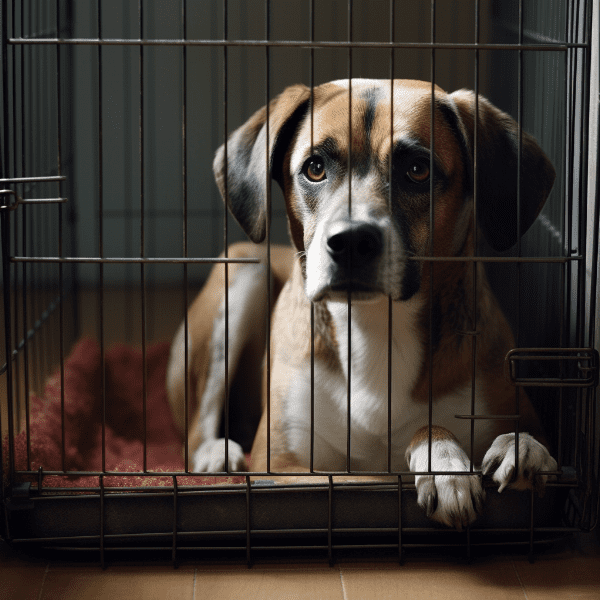
Causes of Separation Anxiety in Dogs
The causes of separation anxiety in dogs can vary widely and may be due to a combination of factors. Understanding the causes of your dog’s separation anxiety is important to develop an effective treatment plan and help your dog overcome their anxiety.
Lack of Socialization
Lack of socialization during puppyhood is a common cause of separation anxiety in dogs. Dogs that are not exposed to a variety of people, places, and experiences during their early development may become anxious or fearful when faced with new situations.
Traumatic Experience
A traumatic experience, such as being abandoned or mistreated, can also lead to separation anxiety in dogs. Dogs that have experienced a traumatic event may develop a strong attachment to their owner and become anxious when separated from them.
Change in Routine
A sudden change in routine or schedule can also trigger separation anxiety in dogs. Dogs that are used to spending time with their owner may become anxious when left alone for longer periods of time or when their routine is disrupted.
Medical Issues
Underlying medical issues, such as chronic pain or gastrointestinal problems, can also contribute to separation anxiety in dogs. Dogs that are in pain or discomfort may become anxious and agitated when left alone.
Loss of a Family Member or Pet
The loss of a family member or pet can also trigger separation anxiety in dogs. Dogs that have lost a companion may become anxious and fearful when left alone.
Addressing the Causes of Separation Anxiety
To address the causes of separation anxiety in dogs, it’s important to work with a veterinarian or animal behaviorist to develop a treatment plan that addresses the underlying causes of your dog’s anxiety. This may include training techniques, medication, and changes to your dog’s environment and routine.
In the next section, we’ll explore training techniques that can be used to reduce crate whining and help your dog cope with separation anxiety.

Training Techniques to Reduce Crate Whining
Training techniques can be an effective way to reduce crate whining in dogs and help them cope with separation anxiety. Here are some techniques that you can use to help your dog feel more comfortable in their crate:
Exercise and Playtime
Regular exercise and playtime can also help reduce crate whining and separation anxiety in dogs. Take your dog for walks, play fetch, or engage in other activities that help them burn off excess energy and feel more relaxed.
.
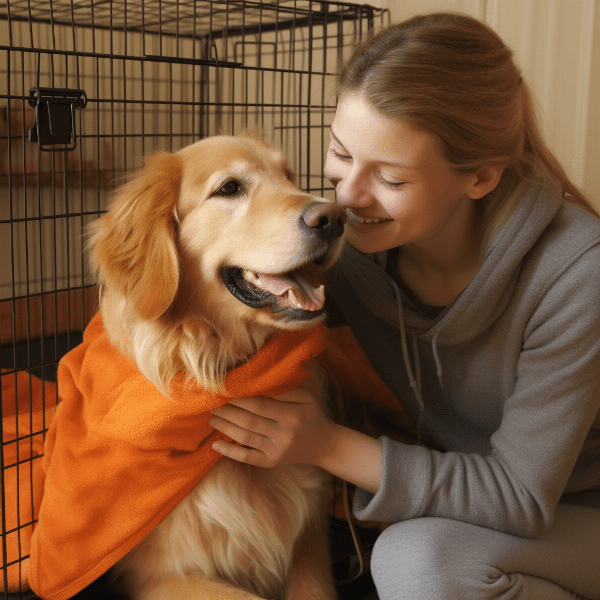
Positive Reinforcement for Coping with Separation Anxiety
Positive reinforcement is a training technique that can be used to help dogs cope with separation anxiety. By rewarding your dog for good behavior and creating positive associations with their crate, you can help them feel more comfortable and less anxious when left alone.
Types of Positive Reinforcement
There are many different types of positive reinforcement that you can use to help your dog cope with separation anxiety. Some common types of positive reinforcement include:
- Treats: Offer your dog a treat when they enter their crate or exhibit good behavior.
- Toys: Provide your dog with toys that they enjoy playing with while in their crate.
- Verbal Praise: Use positive, reassuring language to let your dog know that they are doing a good job.
- Physical Contact: Give your dog a reassuring pat or gentle rub when they exhibit good behavior.
Benefits of Positive Reinforcement
Positive reinforcement can have many benefits for dogs coping with separation anxiety. It can help reduce stress and anxiety, increase confidence, and strengthen the bond between you and your dog. Additionally, using positive reinforcement can be a more effective and humane training technique than punishment or negative reinforcement.
Incorporating Positive Reinforcement into Your Training Plan
To incorporate positive reinforcement into your training plan, start by identifying the behaviors that you want to reinforce. Offer treats, toys, or verbal praise when your dog exhibits these behaviors, and be consistent in your training. Gradually increase the amount of time your dog spends in their crate, and continue to reinforce positive behavior.
In the next section, we’ll explore the importance of providing comfort to your dog during separation and how to build a safe and secure crate environment.
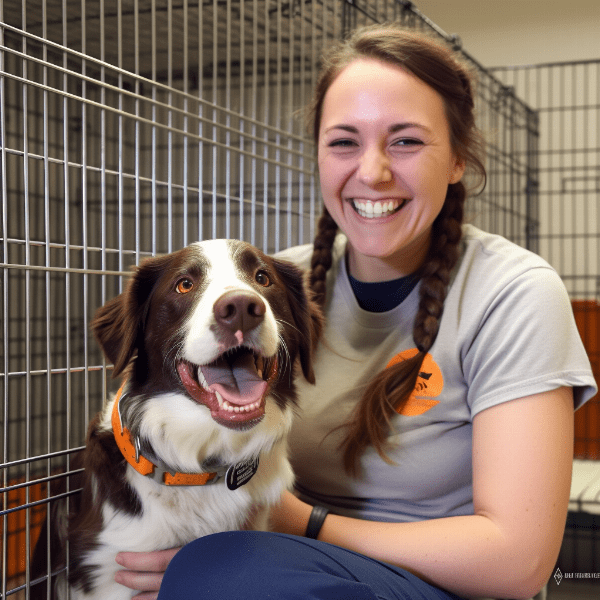
Providing Comfort to Your Dog During Separation
Providing comfort to your dog during separation is an important part of helping them cope with separation anxiety. Creating a safe, comfortable environment for your dog can help reduce their stress and anxiety when left alone.
Calming Music
Playing calming music or white noise can also help reduce your dog’s anxiety during separation. Choose music that is specifically designed to calm dogs or that features soothing sounds, such as ocean waves or rain.
Aromatherapy
Aromatherapy can also be effective in reducing your dog’s anxiety during separation. Lavender and chamomile are both known for their calming properties and can be used in the form of essential oils or sprays.
Temperature and Lighting
Ensuring that your dog’s environment is comfortable is also important. Keep the temperature in the room moderate and ensure that there is adequate lighting.
Familiar Scents
Providing familiar scents, such as your clothing or bedding, can also help your dog feel more comfortable and secure in their crate.
Building a Safe and Secure Crate Environment
Creating a safe and secure crate environment is also essential to helping your dog cope with separation anxiety. Choose a crate that is the appropriate size for your dog and that provides adequate ventilation. Ensure that the crate is secure and cannot be easily tipped over or moved.
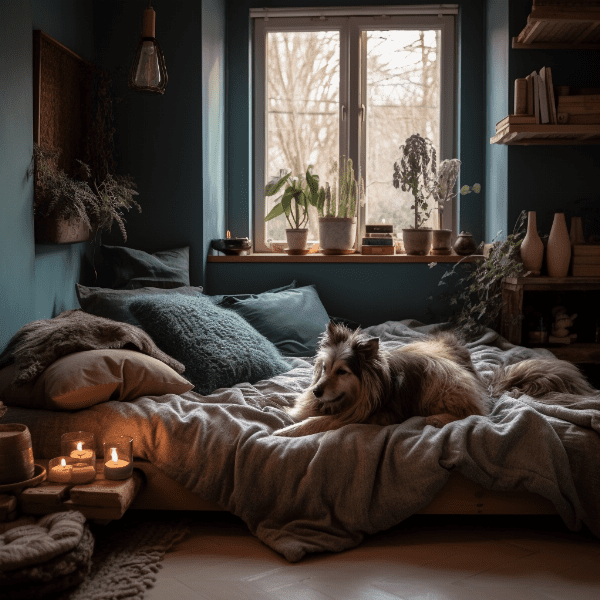
Building a Safe and Secure Crate Environment
Building a safe and secure crate environment is essential to helping your dog cope with separation anxiety. A well-designed crate can provide a sense of security for your dog and help reduce their anxiety when left alone.
Choosing the Right Crate
Choosing the right crate is the first step in building a safe and secure environment for your dog. The crate should be large enough for your dog to stand up, turn around, and lie down comfortably. It should also be well-ventilated and sturdy.
Adding Comfort Items
Adding comfort items, such as bedding or toys, can help your dog feel more comfortable and secure in their crate. Choose items that your dog enjoys and that provide a sense of security.
Placing the Crate in a Safe Location
Placing the crate in a safe location is also important. The crate should be placed in a quiet, low-traffic area of your home, away from distractions and loud noises.
Securing the Crate
Ensuring that the crate is secure is also essential to your dog’s safety and security. Make sure that the crate is stable and cannot be easily tipped over or moved. Use a secure latch or lock to keep the crate door closed.
Providing Adequate Ventilation
Providing adequate ventilation is also important to your dog’s health and safety. Ensure that the crate has plenty of ventilation to allow for fresh air to circulate.
Gradual Introduction to the Crate
Introducing your dog to the crate gradually can also help them feel more comfortable and secure. Start by placing treats or toys in the crate and encouraging your dog to enter on their own. Gradually increase the amount of time your dog spends in the crate until they are comfortable being left alone for longer periods of time.

Managing Separation Anxiety Through Exercise and Routine
Exercise and routine are important components of managing separation anxiety in dogs. Providing your dog with regular exercise and a consistent routine can help reduce their anxiety and prevent destructive behaviors.
Benefits of Exercise
Regular exercise can help reduce stress and anxiety in dogs. Exercise helps release endorphins, which can promote feelings of happiness and well-being. Additionally, exercise can help your dog burn off excess energy, making them less likely to engage in destructive behaviors when left alone.
Establishing a Routine
Establishing a routine can also help reduce your dog’s anxiety. Dogs thrive on routine and predictability, so establishing a consistent schedule can help them feel more secure and reduce their stress.
Providing Mental Stimulation
Providing mental stimulation, such as puzzle toys or interactive games, can also help reduce your dog’s anxiety. Mental stimulation can help keep your dog’s mind active and engaged, reducing their stress levels and preventing destructive behaviors.
Scheduling Time for Interaction
Scheduling time for interaction with your dog is also important. Spending quality time with your dog can help strengthen your bond and reduce their anxiety when left alone.
Managing Separation Gradually
Managing separation gradually is also important. Start by leaving your dog alone for short periods of time and gradually increase the amount of time they spend alone. This can help your dog become accustomed to being alone and reduce their anxiety.
In the next section, we’ll explore when to seek professional help for severe separation anxiety in dogs.
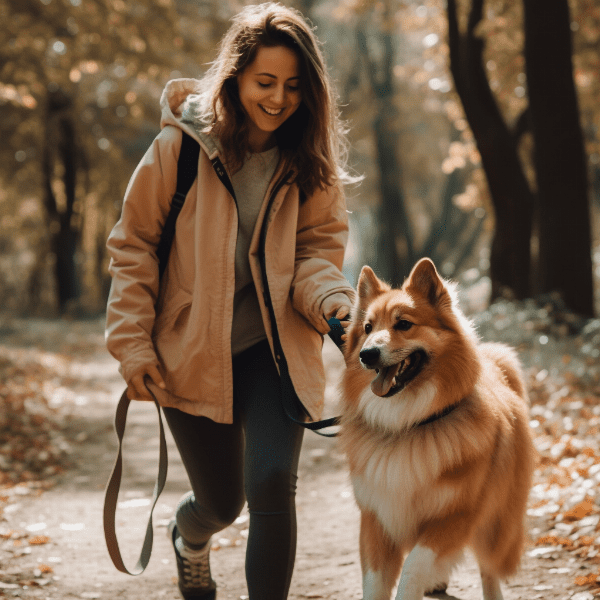
Seeking Professional Help for Severe Separation Anxiety
While many dogs can be successfully treated for separation anxiety through training and behavior modification, some dogs may require professional help to manage their anxiety. Here are some signs that your dog’s separation anxiety may be severe and require professional intervention:
Destructive Behavior
If your dog engages in destructive behavior, such as chewing or digging, when left alone, despite your attempts to address the behavior through training and management, it may be a sign that their separation anxiety is severe.
Aggression
If your dog becomes aggressive towards people or other animals when left alone, it may be a sign of severe separation anxiety. Aggression can be dangerous and may indicate that your dog’s anxiety is causing significant emotional distress.
Seeking Professional Help
If you notice any of these signs in your dog, it may be time to seek professional help. A veterinarian or animal behaviorist can work with you to develop a treatment plan that addresses your dog’s specific needs and helps them overcome their anxiety.
In some cases, medication may be necessary to manage your dog’s separation anxiety. However, medication should always be used in conjunction with behavior modification techniques and under the guidance of a veterinarian or animal behaviorist.
In conclusion, managing separation anxiety in dogs can be challenging, but with patience, consistency, and the help of professionals, it is possible to help your dog overcome their anxiety and feel more comfortable and secure when left alone.
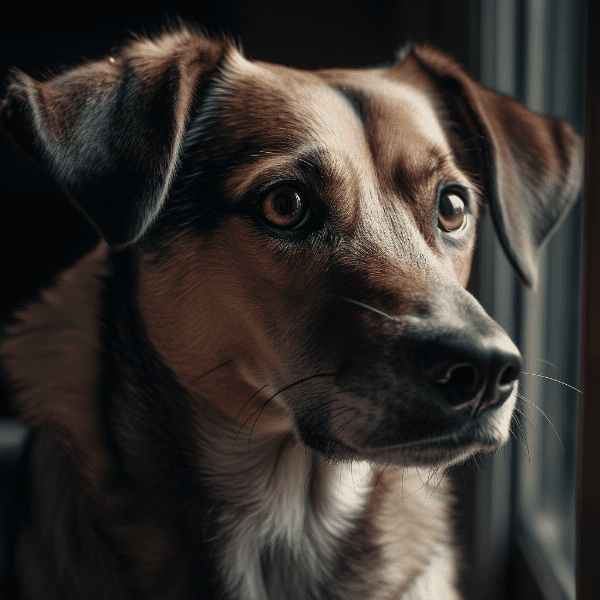
Staying Patient and Consistent in Coping with Crate Whining
Managing crate whining and separation anxiety in dogs can be a challenging process that requires patience, consistency, and persistence. Here are some tips to help you stay patient and consistent in your efforts to help your dog cope with separation anxiety:
Set Realistic Expectations
Managing separation anxiety is a process that takes time, patience, and consistency. Set realistic expectations for your dog’s progress and be prepared for setbacks.
Stick to a Routine
Sticking to a routine can help reduce your dog’s anxiety by providing them with a sense of predictability and stability. Establish a consistent schedule for feeding, exercise, and playtime, and try to keep your departure and arrival times as consistent as possible.
Use Positive Reinforcement
Positive reinforcement is a powerful tool for shaping behavior and can be used to help your dog feel more comfortable and secure in their crate. Use treats, toys, and verbal praise to reinforce positive behavior and encourage your dog to associate their crate with positive experiences.
Be Consistent in Your Training
Consistency is key in training your dog to cope with separation anxiety. Be consistent in your approach to training, and use the same techniques and commands consistently.
Be Patient
Patience is essential when managing separation anxiety. It can take time for your dog to become comfortable with being left alone, so be patient and avoid rushing the process.
Seek Professional Help When Necessary
If your dog’s separation anxiety is severe or you are having difficulty managing their behavior, seek professional help from a veterinarian or animal behaviorist.
In conclusion, managing crate whining and separation anxiety in dogs requires patience, consistency, and persistence. By setting realistic expectations, sticking to a routine, using positive reinforcement, being consistent in your training, and seeking professional help when necessary, you can help your dog cope with separation anxiety and feel more comfortable and secure when left alone.




